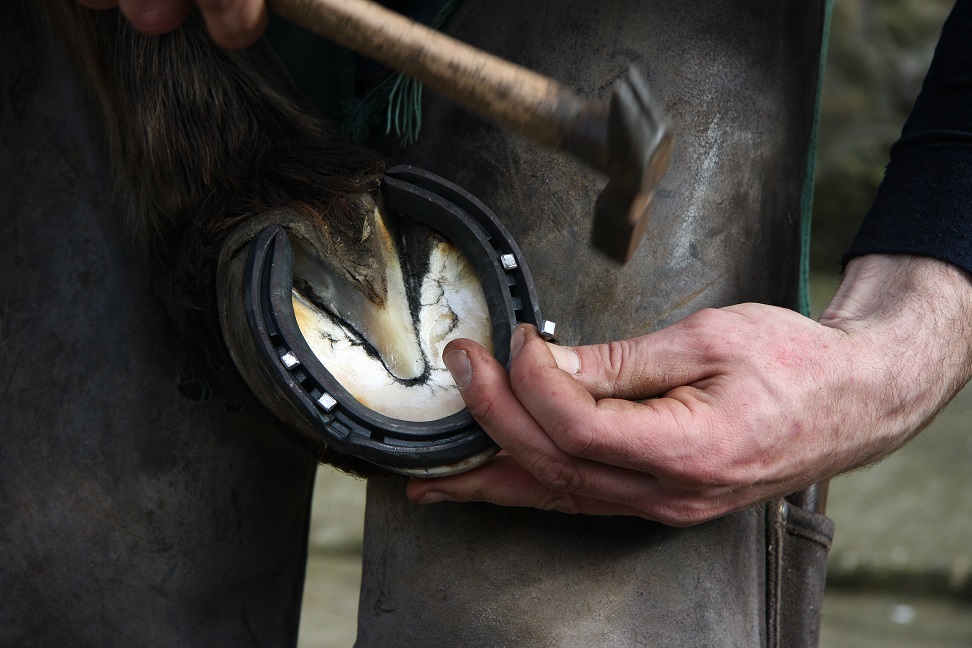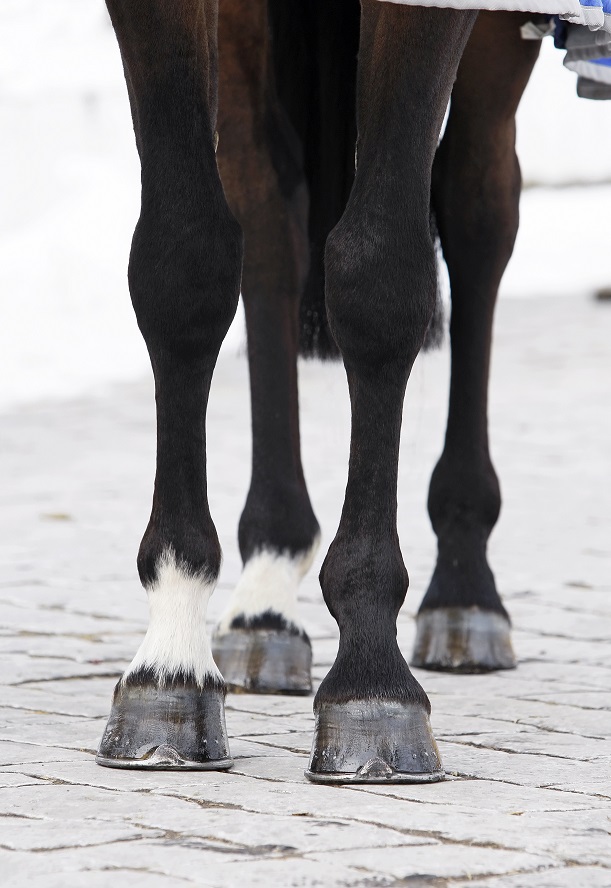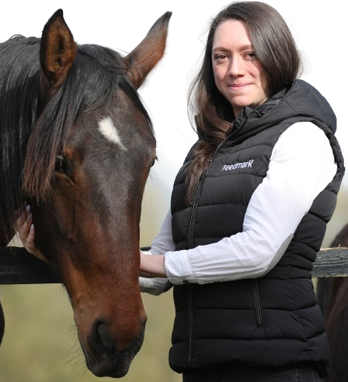Feeding for Hoof Health
You may have heard the phrase “no hoof, no horse” which simply means that when a problem occurs in the hoof, it can have detrimental effects to the whole horse. This is why it is so important to look after your horse’s feet to reduce the risk of problems arising, such as hoof cracks for example. Hoof care involves working closely with your farrier or trimmer to care for the hoof from the outside, but also considering your horse’s diet, and if he is receiving the correct nutrients for quality horn growth.
More information on the different types of hoof cracks and how to manage them can be found here.
Nutrition is a key factor when it comes to the health and condition of your horse’s feet. There are certain nutrients that are vital to support quality horn growth, which your horse is likely to be lacking if he is fed a forage only diet. Feedmark’s Hardy Hoof is a comprehensive formulation of these important vitamins, minerals and amino acids, plus soy lecithin, MSM, linseed and brewer’s yeast.

How do vitamins and minerals help my horse’s hooves?
One of the key vitamins associated with hoof health is vitamin B7, better known as Biotin. It supports general health, but it is one of the few vitamins where there is evidence to show that it can be beneficial to exceed the recommended daily allowance. This is because extra Biotin in the diet promotes healthy hoof growth by increasing the production of Keratin. It is water soluble, and therefore isn’t stored in the body so it would be necessary to supplement daily despite the horse naturally producing small quantities in the hindgut.
Vitamin A is another vitamin commonly linked to hoof health, as it is important for cell differentiation and a deficiency is believed to contribute to coronary band inflammation.
The minerals Zinc and Copper are both present in forages however typically in very low amounts so a horse on a forage only diet is likely to be deficient. These minerals are important as they stimulate cell growth and aid Keratin production. Additionally, Calcium is a macro-mineral, necessary for cell to cell attachment within hoof horn and similarly, Manganese is associated with the health of the internal structures in the hoof, due to its role in chondroitin sulphate synthesis.
Why are amino acids important?
To achieve a strong hoof wall, Keratin is essential. This is a structural protein made up of amino acids including Cysteine that gives Keratin its strength and structure.
Hardy hoof contains high levels of the amino acids Threonine, Lysine which is required for the production of proteins such as elastin and collagen, and importantly Methionine which, along with Vitamin B6, produces cysteine.

I already feed a vitamin and mineral supplement, why should I add Hardy Hoof to my horse’s diet?
On top of providing the required nutrients for hoof health, Hardy Hoof contains additional helpful ingredients. Linseed is rich in fatty acids which work to seal moisture in the hoof, while Lecithin is a phospholipid that aids pliability in the connective tissues of the hoof. Additionally, MSM is included in the formulation as it is a source of Sulphur and helps to bond protein strands in the hoof. Plus, Brewer’s yeast has been added as a source of B vitamins, which play important roles in body tissues and are believed to support hoof quality.
When will I start to see results from feeding Hardy Hoof?
It is important to be aware that it takes approximately 8-12 months for hoof horn to grow from the coronary band down to the weight-bearing surface, so you would need to feed Hardy Hoof continuously to support good quality hoof horn growth.
Top tips for hoof health:
- Pick out hooves daily – it is important to check your horse’s hooves every day and pick them out to remove any stones and dirt. Keep an eye out for any abnormalities, such as cracks or bruising.
- Keep regular appointments with your farrier or trimmer – the length of time between farrier visits depends on your horse’s individual needs, but typically your farrier will need to visit every 6 weeks if your horse is shod and less often for barefoot horses.
- Avoid muddy turnout and wet bedding – discourage bacterial growth by keeping your horse on dry bedding or limiting his time stood in muddy paddocks.
- Supply the correct nutrients – ensure your horse is provided with the necessary vitamins, minerals and amino acids essential for healthy horn growth, such as those provided in Hardy Hoof.
